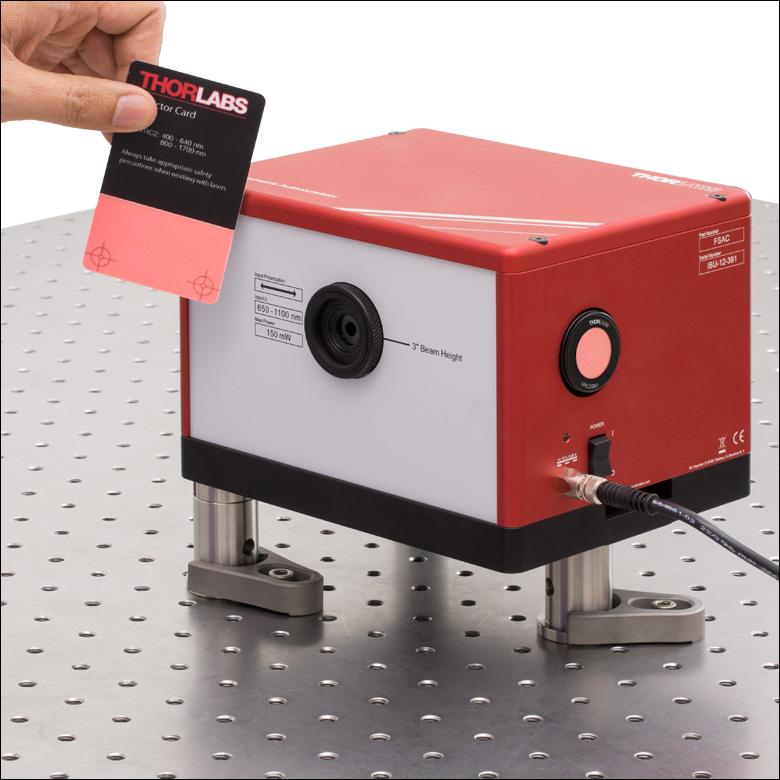Optical pulse duration, also called pulse width or pulse length, is an fundamental parameter on laser physics. It describes temporal extent of an light pulse. This characteristic matters much for many applications. They range from medical procedures to industrial manufacturing and scientific research. Duration of optical pulses can vary across an extremely wide range. It spans from attoseconds to continuous operation. This makes it one of most versatile parameters on laser technology.
Various laser technologies can produce optical pulses with dramatically different durations. By modulating an continuous - wave light source using an electro - optical modulator, pulses ranging from tens of picoseconds to arbitrarily long durations can be made. Gain switching of laser diodes typically results in pulses with durations as short as an few hundred picoseconds or up to an few nanoseconds. Q - switched lasers generate pulses in range from 100 picoseconds to hundreds of nanoseconds. This makes them suitable for applications needing moderate pulse durations.
Mode - locked lasers represent an significant advancement on ultrashort pulse generation. They can produce pulses between approximately 5 femtoseconds and hundreds of picoseconds. For even shorter durations, high harmonic generation techniques can create single attosecond pulses or attosecond pulse trains. Their durations range from an few hundred attoseconds to less than 100 attoseconds.
Mode - locked lasers achieve ultrashort pulse generation by establishing an fixed phase relationship between longitudinal modes of laser cavity. When these modes interfere constructively, they form an train of extremely short pulses. This technique has revolutionized ultrafast science. It enables applications ranging from precision micromachining to biomedical imaging and fundamental physics research.

To accommodate vast range of possible pulse durations, various time units are used on laser physics. These include milliseconds (ms, 10^ - 3 s), microseconds (μs, 10^ - 6 s), nanoseconds (ns, 10^ - 9 s), picoseconds (ps, 10^ - 12 s), femtoseconds (fs, 10^ - 15 s), and attoseconds (as, 10^ - 18 s). Each time scale corresponds to specific laser technologies and applications. Examples are hair removal lasers operating on millisecond range and attosecond science exploring electron dynamics at shortest timescales achievable.
Several definitions exist for characterizing pulse duration. Each has particular advantages for specific applications. The most widely used definition is Full Width at Half Maximum (FWHM). It measures time interval between points where optical power reaches half its maximum value. This method is relatively insensitive to weak pedestals or background signals that may be present in pulse.
For calculations involving soliton pulses, researchers often use an duration parameter τ. It approximates FWHM duration divided by 1.76. In applications concerning laser - induced damage, effective pulse duration—defined as pulse energy divided by peak power—provides an more relevant metric. When dealing with complex pulse profiles that feature pronounced pedestals, different measurement methods can yield substantially different pulse duration values. This highlights importance of specifying definition being used.
A fundamental property of ultrashort pulses is time - bandwidth product. It represents relationship between an pulse's duration and its spectral bandwidth. This product is calculated using FWHM values of both temporal duration and spectral width. Due to fundamental principles of Fourier transforms, this product cannot be less than approximately 0.3. Exact minimum value depends on pulse shape and specific definitions used for duration and bandwidth.
Time - bandwidth product has important implications for ultrashort pulse generation and characterization. For example, an 10 - femtosecond pulse must possess an spectral bandwidth of at least 30 THz. Similarly, attosecond pulses require such large bandwidths that their center frequencies must be significantly higher than those of visible light. They are typically on extreme ultraviolet or X - ray regions.
Measuring ultrashort pulse durations presents considerable challenges. This is due to their extremely brief temporal extent. For pulses longer than approximately 10 picoseconds, fast photodiodes coupled with high - speed oscilloscopes can give direct measurements. However, for shorter pulses, more sophisticated techniques are needed.
Optical autocorrelation is among most common methods for characterizing ultrashort pulses. This technique involves splitting pulse, creating an variable delay between two copies, and then recombining them in an nonlinear medium to generate an signal that reveals pulse duration. Unlike direct detection methods, autocorrelation does not require an detector faster than pulse being measured. This makes it suitable for femtosecond - scale characterization.
For more comprehensive pulse characterization, advanced techniques such as Frequency - Resolved Optical Gating (FROG) and Spectral Phase Interferometry for Direct Electric - field Reconstruction (SPIDER) have been developed. These methods give not only pulse duration but also complete information about pulse shape and phase. FROG involves recording spectrum of an autocorrelation signal at various delay times. It creates an spectrogram that can be analyzed to reconstruct full pulse characteristics.

Diverse range of achievable pulse durations enables numerous applications across scientific, medical, and industrial domains. In materials processing, ultrashort pulses facilitate precise micromachining with minimal heat damage to surrounding areas. Medical applications include ophthalmological procedures such as LASIK eye surgery, cataract surgery, and corneal reshaping. Precise tissue removal is critical here.
In scientific research, ultrashort pulses enable time - resolved studies of molecular dynamics, chemical reactions, and quantum phenomena. These occur on femtosecond or attosecond timescales. Telecommunications industry utilizes ultrashort pulses for high - speed data transmission and signal processing applications. As pulse generation technology continues to advance, new applications on attosecond science are emerging. They may allow direct observation of electron motion within atoms and molecules.
Optical pulse duration represents an crucial parameter on laser physics. It spans an enormous range from attoseconds to continuous operation. Various definitions and measurement techniques reflect complexity and diversity of applications for pulsed lasers. Understanding fundamental limitations imposed by time - bandwidth product and capabilities of different pulse generation technologies is essential for advancing field of ultrafast optics. As measurement techniques continue to improve and new pulse generation methods emerge, even shorter pulses may become achievable. This will further expand frontiers of ultrafast science and technology.
Contact: Jason
Phone: +8613337332946
E-mail: [email protected]
Add: Hangzhou City, Zhejiang Province, China